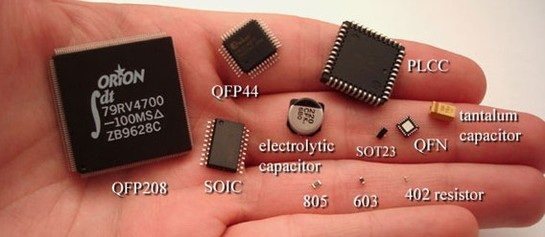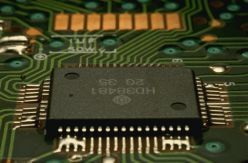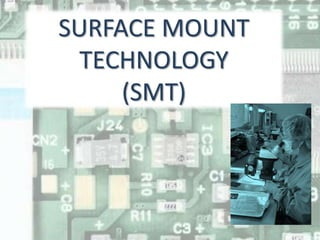Content Menu
● Understanding SMT Technology
>> Advantages of SMT
● What Is an SMT Stencil?
● Types of SMT Stencils
● Manufacturing Process of SMT Stencils
● Applications of SMT Stencils
● Importance of SMT Stencils in Electronics Assembly
● Challenges in Using SMT Stencils
● Future Trends in SMT Stencil Technology
● Conclusion
● FAQ
>> 1. What materials are commonly used for SMT stencils?
>> 2. How do laser-cut stencils differ from electroformed stencils?
>> 3. What are some common issues faced when using SMT stencils?
>> 4. How does using an SMT stencil improve assembly efficiency?
>> 5. What future trends can we expect in SMT stencil technology?
Surface Mount Technology (SMT) has revolutionized the way electronic components are assembled onto printed circuit boards (PCBs). One of the critical tools in this process is the SMT stencil. This article delves into the intricacies of SMT stencils, their types, manufacturing processes, applications, and their significance in modern electronics assembly.

Understanding SMT Technology
Before exploring SMT stencils, it is essential to understand what SMT entails. Surface Mount Technology is a method used to mount electronic components directly onto the surface of PCBs. Unlike traditional through-hole technology, where components are inserted into holes drilled into the PCB, SMT allows for a more compact design and increased component density.
Advantages of SMT
- Reduced Size: Components are smaller and can be placed closer together.
- Higher Performance: Shorter electrical paths lead to improved performance.
- Cost-Effectiveness: Fewer materials are needed for assembly, reducing costs.
What Is an SMT Stencil?
An SMT stencil is a thin sheet of metal or other materials with openings that correspond to the pads on a PCB. These stencils are used to apply solder paste onto the PCB before components are placed for soldering. The stencil ensures precise application of solder paste, which is crucial for creating reliable electrical connections.
Types of SMT Stencils
There are several types of SMT stencils, each designed for specific applications:
- Laser-Cut Stencils: Made using laser technology, these stencils offer high precision and can accommodate complex designs.
- Electroformed Stencils: Created through an electroforming process, these stencils provide excellent durability and can produce very fine apertures.
- Stencil Sheets: These are typically made from stainless steel or other metals and can be used for prototyping or low-volume production.
Manufacturing Process of SMT Stencils
The manufacturing process of SMT stencils involves several steps:
1. Design Creation: The design for the stencil is created using CAD software, ensuring that it matches the PCB layout precisely.
2. Material Selection: Common materials include stainless steel and nickel due to their durability and ability to withstand the soldering process.
3. Cutting Process: Depending on the type of stencil being produced, various cutting methods such as laser cutting or chemical etching are employed.
4. Finishing Touches: The stencils may undergo additional processes like cleaning and surface treatment to enhance their performance.
5. Quality Control: Each stencil is inspected for accuracy and quality before being shipped for use in production.
Applications of SMT Stencils
SMT stencils play a vital role in various applications:
- Consumer Electronics: Used extensively in smartphones, tablets, and other devices where space is at a premium.
- Automotive Industry: Critical for assembling electronic control units (ECUs) in vehicles.
- Medical Devices: Ensures reliability in life-saving equipment where precision is paramount.

Importance of SMT Stencils in Electronics Assembly
The importance of SMT stencils cannot be overstated:
- Precision Application: They ensure that solder paste is applied accurately to prevent defects such as solder bridging or insufficient solder.
- Efficiency: Using stencils speeds up the assembly process compared to manual application methods.
- Quality Assurance: Proper use of stencils contributes to higher yield rates and fewer defects in final products.
Challenges in Using SMT Stencils
Despite their advantages, there are challenges associated with SMT stencils:
- Clogging: Fine apertures can become clogged with solder paste if not managed correctly.
- Alignment Issues: Misalignment between the stencil and PCB can lead to application errors.
- Material Wear: Over time, stencils can wear out, requiring replacement to maintain quality standards.
Future Trends in SMT Stencil Technology
As technology advances, so does the design and functionality of SMT stencils:
- Smart Stencils: Incorporating sensors that monitor paste application in real-time could enhance precision further.
- 3D Printing Technologies: Emerging 3D printing methods may allow for faster production of customized stencils tailored to specific needs.
- Sustainability Initiatives: Efforts to create eco-friendly materials for stencil production are on the rise as industries seek sustainable solutions.
Conclusion
SMT stencils are an integral component of modern electronics manufacturing. Their ability to ensure precise application of solder paste significantly impacts the quality and reliability of electronic assemblies. As technology continues to evolve, so too will the designs and applications of these essential tools. Understanding their role helps manufacturers optimize their processes and produce high-quality electronic products efficiently.

FAQ
1. What materials are commonly used for SMT stencils?
Common materials include stainless steel and nickel due to their durability and resistance to corrosion during soldering processes.
2. How do laser-cut stencils differ from electroformed stencils?
Laser-cut stencils provide high precision but may not be as durable as electroformed stencils, which are produced through an electroforming process that allows for very fine apertures.
3. What are some common issues faced when using SMT stencils?
Common issues include clogging of fine apertures, misalignment with PCBs, and wear over time that necessitates replacement.
4. How does using an SMT stencil improve assembly efficiency?
SMT stencils allow for faster application of solder paste compared to manual methods, contributing to quicker assembly times and higher throughput rates.
5. What future trends can we expect in SMT stencil technology?
Future trends may include smart stencils with real-time monitoring capabilities, advancements in 3D printing technologies for custom designs, and initiatives focused on sustainable materials for production.




















